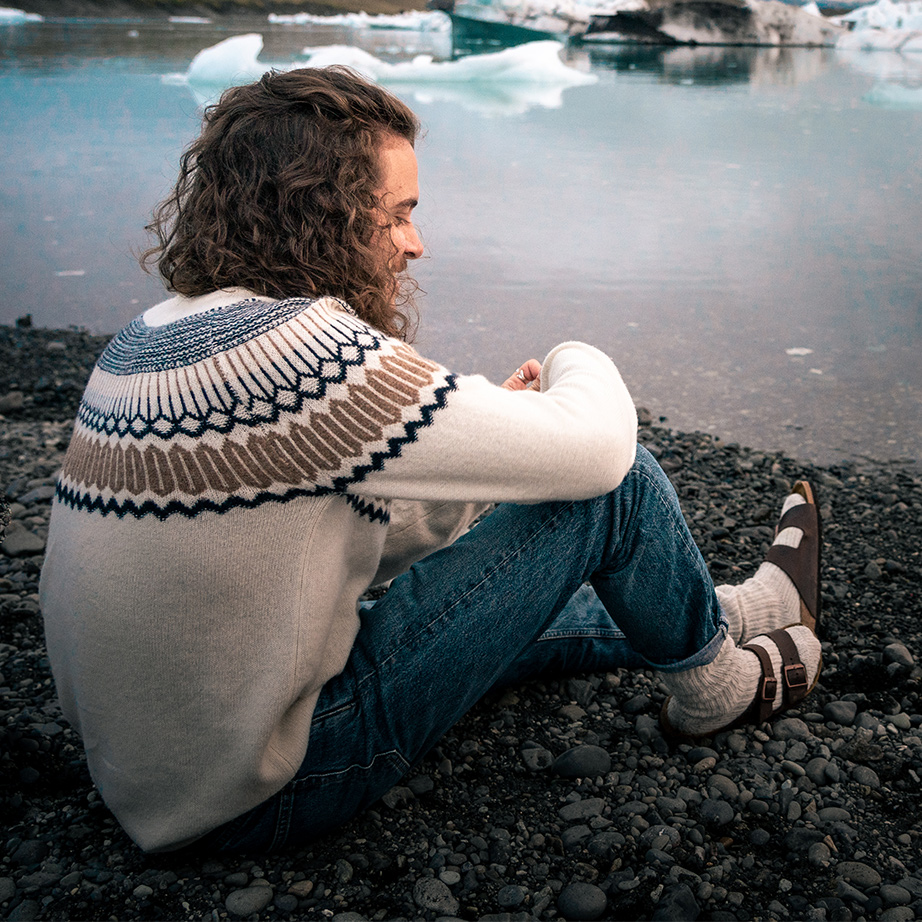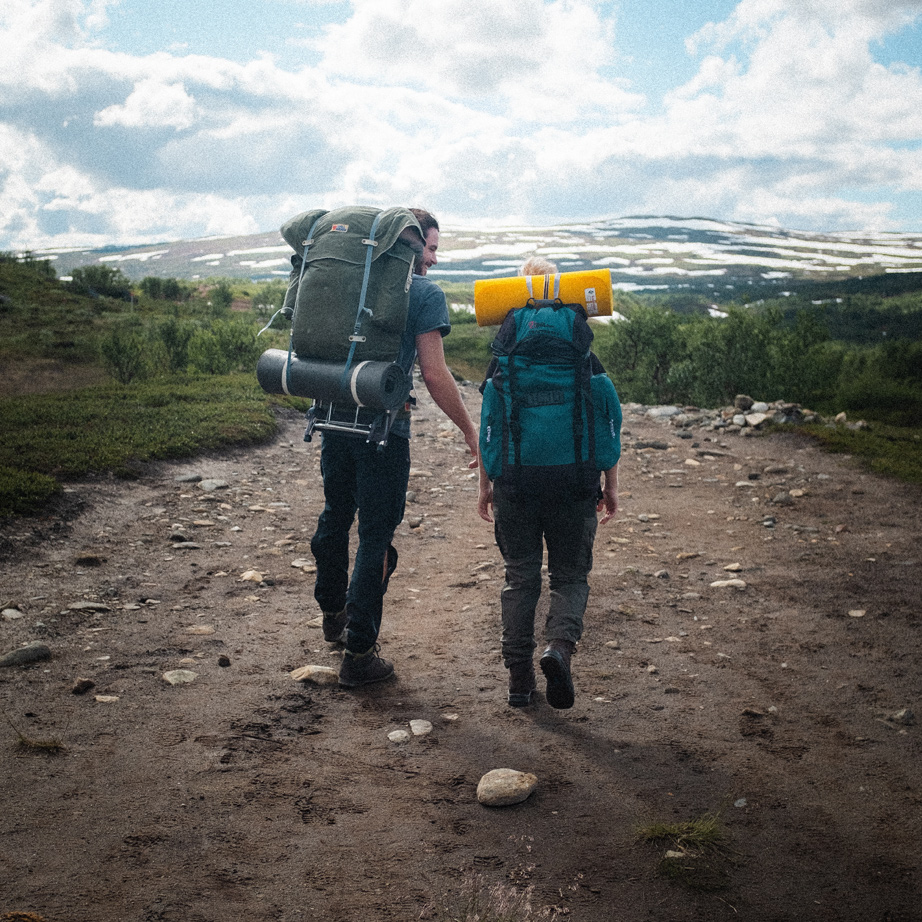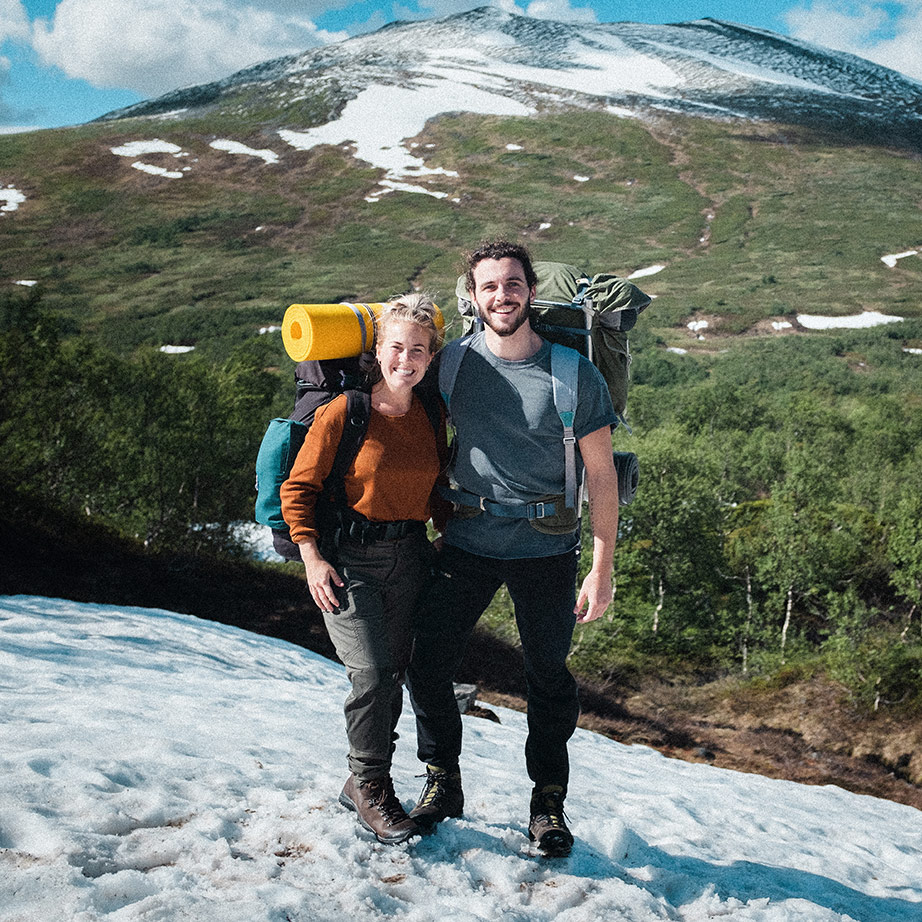Backpacks built for a lifetime
Ultra-durable, in some families Fjällräven backpacks are practically an heirloom. A fact that Photographer Stevie Antouniou has recently discovered. He shares his favourite features of a newfound treasure
Before there was a Fjällräven, there was a backpack.
In 1950, a young Åke Nordin, founder of Fjällräven, often headed off to the mountains, sometimes for a week at a time. He was truly passionate about nature.
He was also often disappointed in the poor quality and functionality of the equipment available at the time. His backpack in particular was a sore point, so he decided to build himself a better one. He sewed a v-shaped bag to get the centre of gravity as high as possible and attached it to a wooden frame for stability. With the frame and bag firmly strapped to his shoulders, he wandered off. Turned out that his new backpack was so good that experienced foresters and reindeer herdsmen he met on his travels asked him to make similar frames for them.

This was the start of Fjällräven, and in 1960 Åke officially launched his company. Working from a basement in Örnsköldsvik, he built an updated version of his first backpack by hand. The LÄTT as it was called, was revolutionary at the time. Made with an aluminium frame, it was light and strong. The perfect product to make nature a little bit more accessible for everyone who wanted to experience it.
Fast forward to 2020. Photographer Stevie Antoniou is preparing for an outdoor trip starting at his girlfriend Carin’s family cabin when he discovers an unpleasant surprise in the attic: his backpack is covered in mould and mildew.
While a lesser man may have bailed on the plans, Stevie just shoved his gear in a plastic grocery bag and headed out anyways. Having had his first outdoor trip in Norway only a few years earlier, Stevie certainly was not going to let an out-of-commission backpack stymie his plans.

“I like to get away from the city to take landscape photos and just enjoy some time in nature. Every time I’m out there I’m humbled, because it puts everyday life into perspective”.
Stevie was greeted with a welcome discovery upon his arrival at the family cabin: Carin’s father’s Fjällräven backpack.
“When we got to the cabin in the woods, we found that Carin’s dad Bo had left this gem there: his own Fjällräven backpack from around the 1980s. I got to borrow it for our hike. It’s an excellent backpack. Even after all these years it’s held up so well.
The vintage feel and ruggedness also make it awesome. The fact that it’s lasted so long is supercool and a testament to how products should be made – and taken care of.”
So, what makes a backpack good? For the product developers and designers at Fjällräven the fundamental qualities of a good backpack have not changed much since Åke’s first model.

First off, correct weight distribution is essential. In fact, this is the main reason Åke prototyped his own. Baggy and flaccid, his store-bought backpack had such poor weight distribution it resembled a pear when full. Åke had to double over forwards when walking so as to not keel over backwards. He solved the problem by assembling a smooth wooden frame that would support weight across his back, and then varnished it with linseed oil to withstand moisture.
We still make backpacks with wooden frames today. The advanced Kajka 75 trekking backpack for example has a strong wooden frame support system designed to distribute the heaviest of loads. As a bonus, the Kajka’s current frame production impacts the environment considerably less than past models.
And while environmentally responsible production is critical to the Fjällräven philosophy, durability for the sake of longevity is even more so. We, as well as our customers, want to ensure that every Fjällräven backpack is made with materials that will last for decades – and serve generations. Backpacks from the Keb and Lappland product families for instance are made with Fjällräven G-1000 Eco fabric – a blend of tightly woven organic cotton and recycled polyester, it is especially resilient.
Always made with materials that stand the test of time, Fjällräven backpacks work best when properly maintained. As Stevie’s unlucky storage space demonstrates, this can happen to all backpacks both on and off the trail. So while on a rainy trek, use a rain cover, and always store your backpack in the vestibule of your tent overnight. When you return home, store your backpack in a case or a plastic covering.
For Stevie who has a budding freelance photography business, alongside a burgeoning interest in nature, a good backpack should also adapt to his particular needs.

“I like something that can take a beating, and since I’m a photographer I need a backpack that looks great in photos. Aesthetics, as well as the texture of the fabric and feel of the hardware, are important to me. Customisation in a backpack is a priority as well. Like the Fjällräven Singi 48, which you can add extra volume to.”
A backpack with easy access to must-have items is also critical for Stevie. In addition to the essentials, on a trip he always brings along a hammock, chessboard, drone and something nice to drink in the evenings. Clever storage details – like detachable compartments, expandable pockets, security pockets, and extendable top flaps – are necessary.
Is there anything missing for Stevie? He only has one request: “I’d love to see a really smart way to store a camera while hiking and still having it easily accessible.”
In actual fact, the Abisko Hike 35 has loops on the hipbelt for fastening a camera bag. Stevie can be sure however, that our team is taking notes on such solid feedback, because at Fjällräven development never stops – and even the best backpacks can have room for improvement.
If you too have an old time Fjällräven favourite that is full of outdoor memories and future plans, don’t hesitate to write to us. #FjallravenStories
